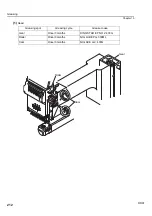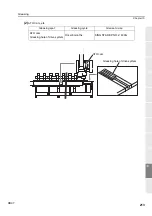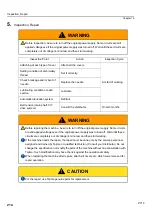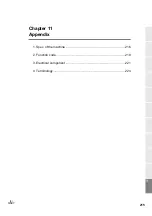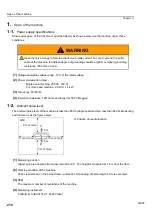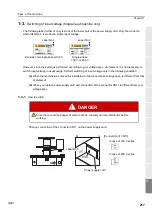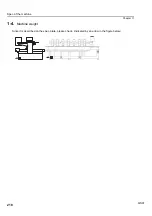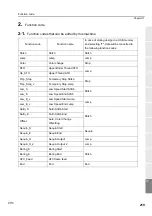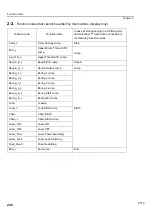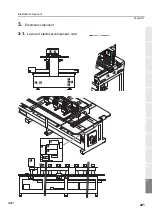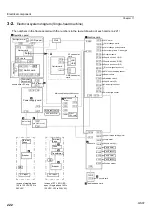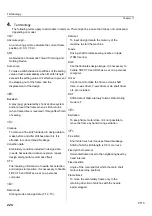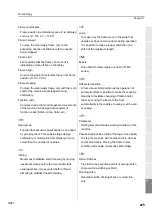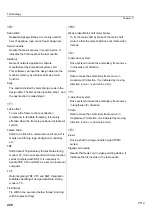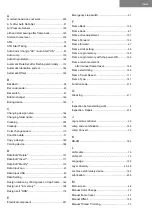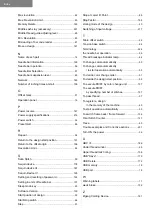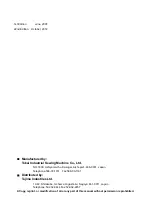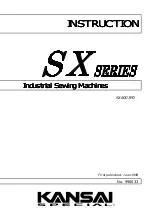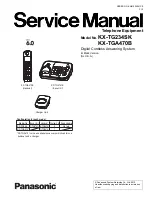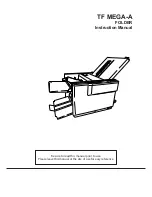
Terminology
226
Chapter 11
PT10
<W>
Weak brake (Main shaft motor brake)
To fix the main shaft by brake of the main shaft
motor so that the main shaft does not rotate when
it stops.
<X>
X-axis drive system
Drive system to make the embroidery frame move
in crosswise (X) direction.
X data
Data to make the embroidery frame move in
crosswise (X) direction. It is indicated by moving
direction (code: +/-) and value (mm).
<Y>
Y-axis drive system
Drive system to make the embroidery frame move
in lengthwise (Y) direction.
Y data
Data to make the embroidery frame move in
lengthwise (Y) direction. It is indicated by moving
direction (code: +/-) and value (mm).
<Z>
Z-axis
Driving shaft to change needle height (TCMX
series).
Zigzag cord needle
Needle that sews cord in zigzag cording device. It
indicates the first needle or the last needle.
<S>
Satin stitch
Repeated zigzag stitches. It is mainly used for
hem of applique, logo, mark, flower design etc.
Sequin needle
Needle that sews sequins in sequin device. It
indicates the first needle or the last needle.
SideKick
Name of network application software
manufactured by Pulse Microsystems Ltd.
This software can input the design data into the
machine memory by wireless LAN as a main
function.
Step
The section divided by color change code in the
design data. The first section is called step 1, and
the next section is called step 2.
<T>
Table offset
To move the frame to the rear direction
temporarily to facilitate threading. It is mainly
effective when the frame is positioned at table cut
section.
Tatami stitch
Stitch to be filled in a certain amount of area. It is
mainly used for big logo, background, underlay
etc.
TBF
Stitch data of Tajima binary format. Data storing
mode is T2. It can correspond much more function
codes compared with DST. It is necessary to
handle TBF, CT0 and DGF as a set on a personal
computer.
TCF
Data integrating TBF, CT0 and DGF. Integration
facilitates handling of design data. Data storing
mode is T3.
Tie Stitches
Tie stitch to be executed before thread trimming
(stitch to prevent fray).
Summary of Contents for TEMX-C Series
Page 13: ...To search from the menu key ...
Page 25: ...Inspection before starting work 12 Chapter 1 ...
Page 39: ...How to use each part 26 Chapter 2 ...
Page 40: ... E 1 2 3 4 5 6 7 8 9 10 11 27 PT10 Chapter 3 Screen 1 Screen display 28 2 Message display 31 ...
Page 147: ...Other functions that must be remembered 134 Chapter 5 ...
Page 171: ...To move the frame to the position registered 158 Chapter 6 ...

